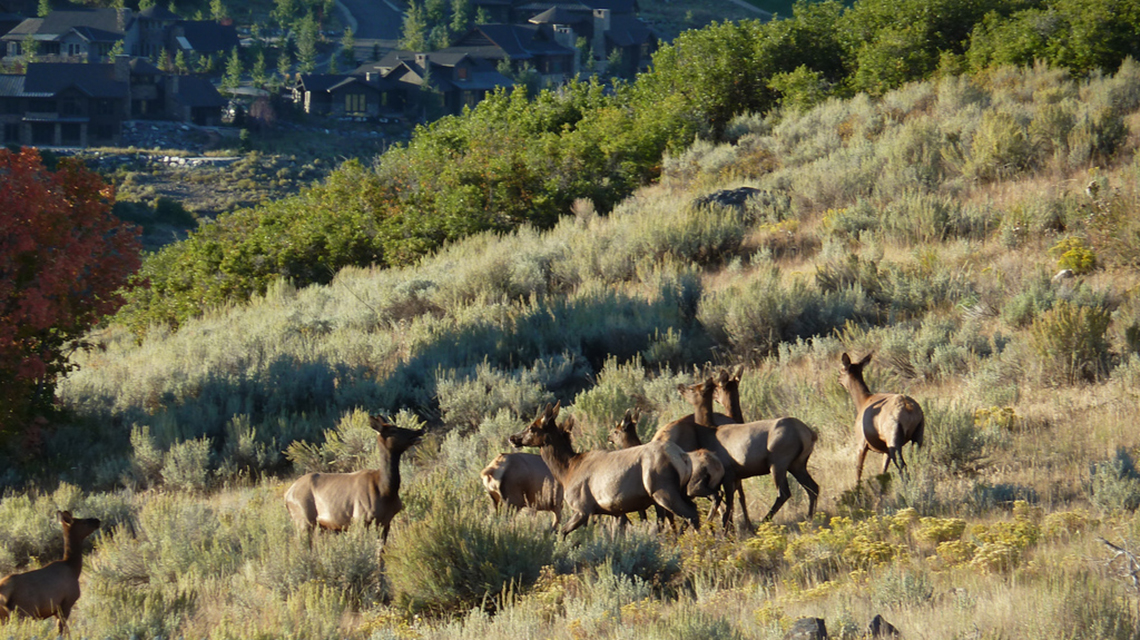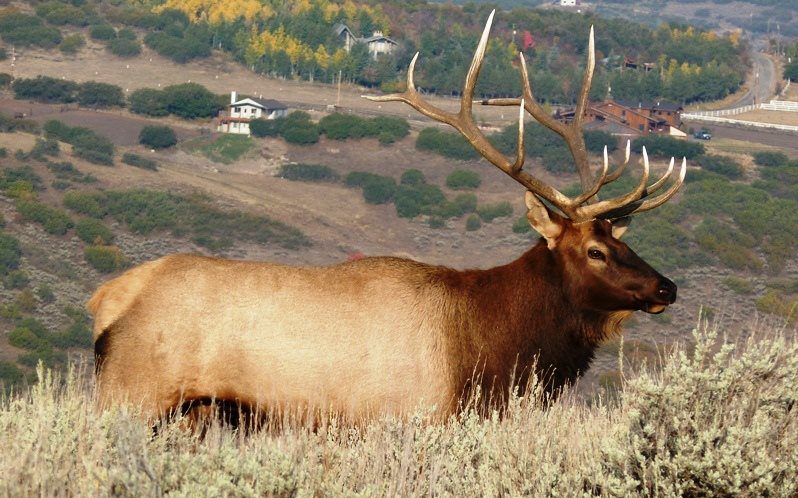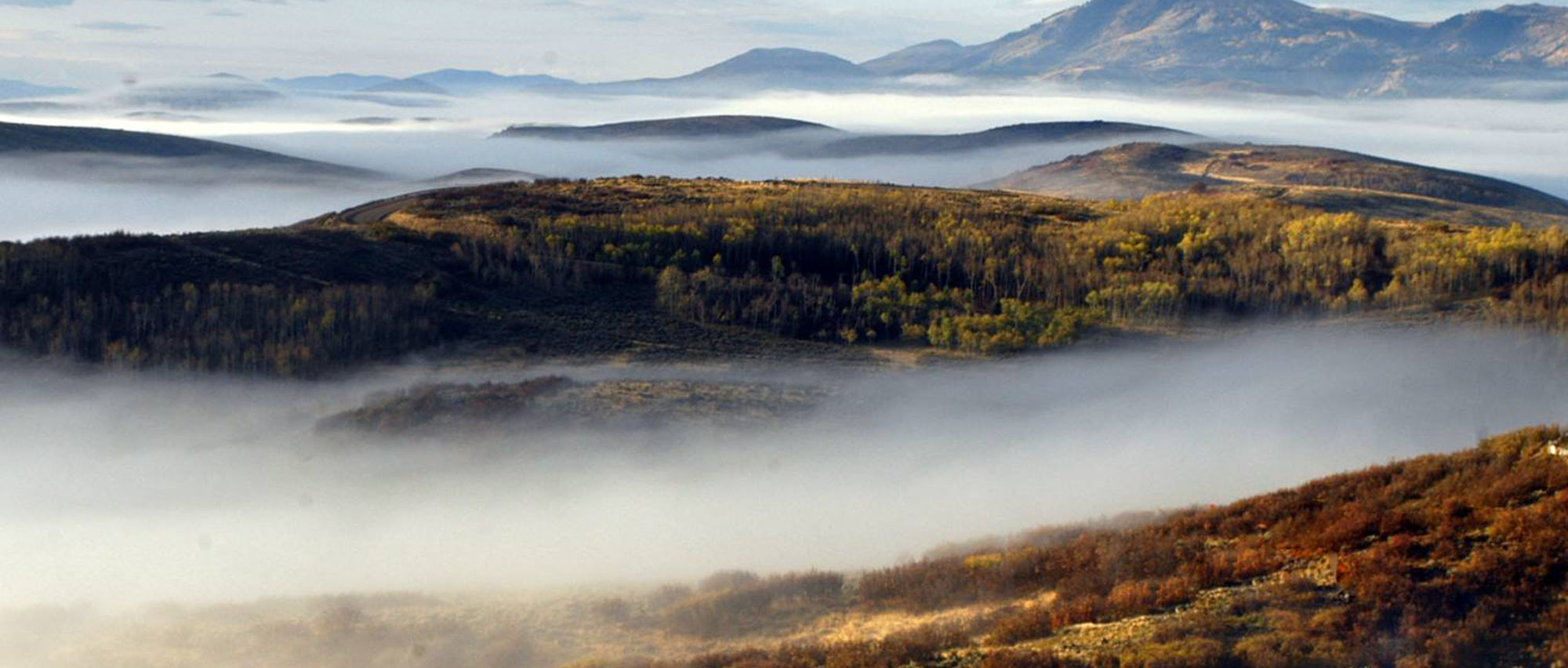Promontory Elk Migration Approaches

Besides the beautiful colors of the Aspens, a sure sign at Promontory that fall is approaching is the annual elk migration. Seeking a more hospitable climate and available food sources, elk—a relative of the deer and moose—move down from higher elevations when leaves start to turn. Autumn is also mating or “rutting” season when the bull elk put on displays of male bravado that can be spectacular to watch.
“Elk are native to the Great Plains,” notes Lieutenant Bruce Johnson of the Utah Division of Wildlife. Famed explorers Lewis and Clark wrote about elk sightings along the present-day Kansas-Nebraska border in the early 1800s. “By the 1950s, a few elk had migrated to Utah. In the ‘60s and ‘70s, the population began advancing,” Johnson adds.
“Elk are very adaptable. They have stomachs that allow them to graze on grass and browse on brush. They are a taller, bigger animal able to push through the deeper snow and cover a lot of ground,” Johnson explains. “On the other hand, their large size and thick coats make them vulnerable to heat, hence their seasonal move to lower elevations for food, water, and mating only after temperatures begin to fall.”

Rutting behavior can be pure entertainment. A male elk gathers cows and calves into a harem. A mature bull can collect between five and twenty cows, while a younger bull may round up only one or two. Bulls wallow in mud to coat themselves with urine to attract cows. They make a sound called a “bugle” to summon females and to intimidate other males. Some bulls challenge the authority of other males and engage in violent battles.
Lt. Johnson advises elk watchers to play it safe and view the spectacle from a distance with binoculars or long-range camera lenses. Getting too close could anger a bull and cause him to charge. Johnson also warns Promontory residents to avoid feeding the elk. “Their stomachs contain enzymes that are matched to their environment. If they eat food that they cannot digest, they can become dehydrated and die,” he says.
For more information, call the UTiP hotline at 1-800-662-deer or the Summit County Sherriff’s Office and request assistance from a wildlife officer. Promontory and the Promontory Conservancy support free-grazing and strictly enforce NO HUNTING OR POACHING.



